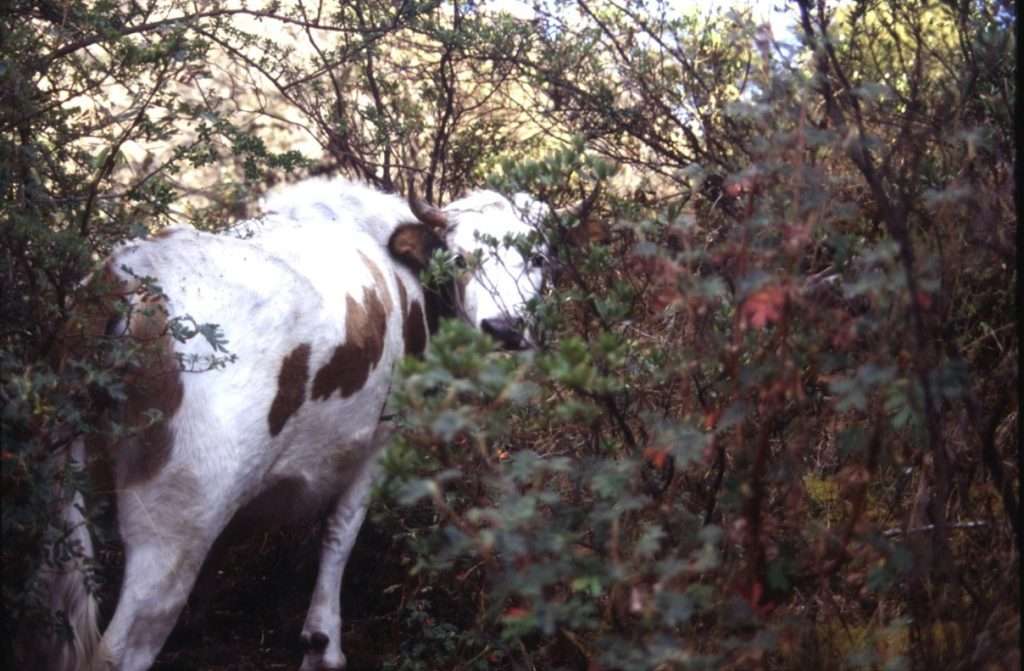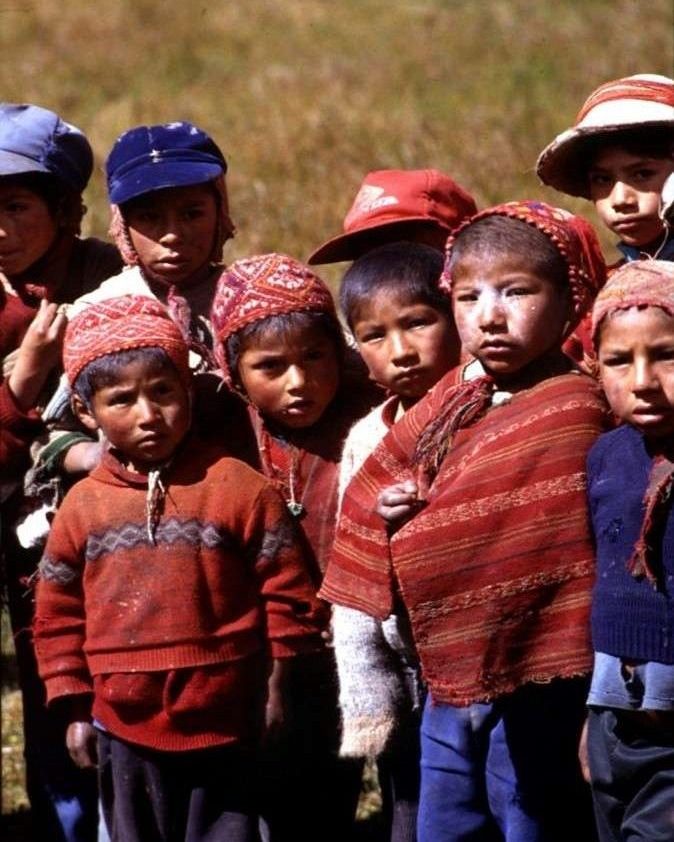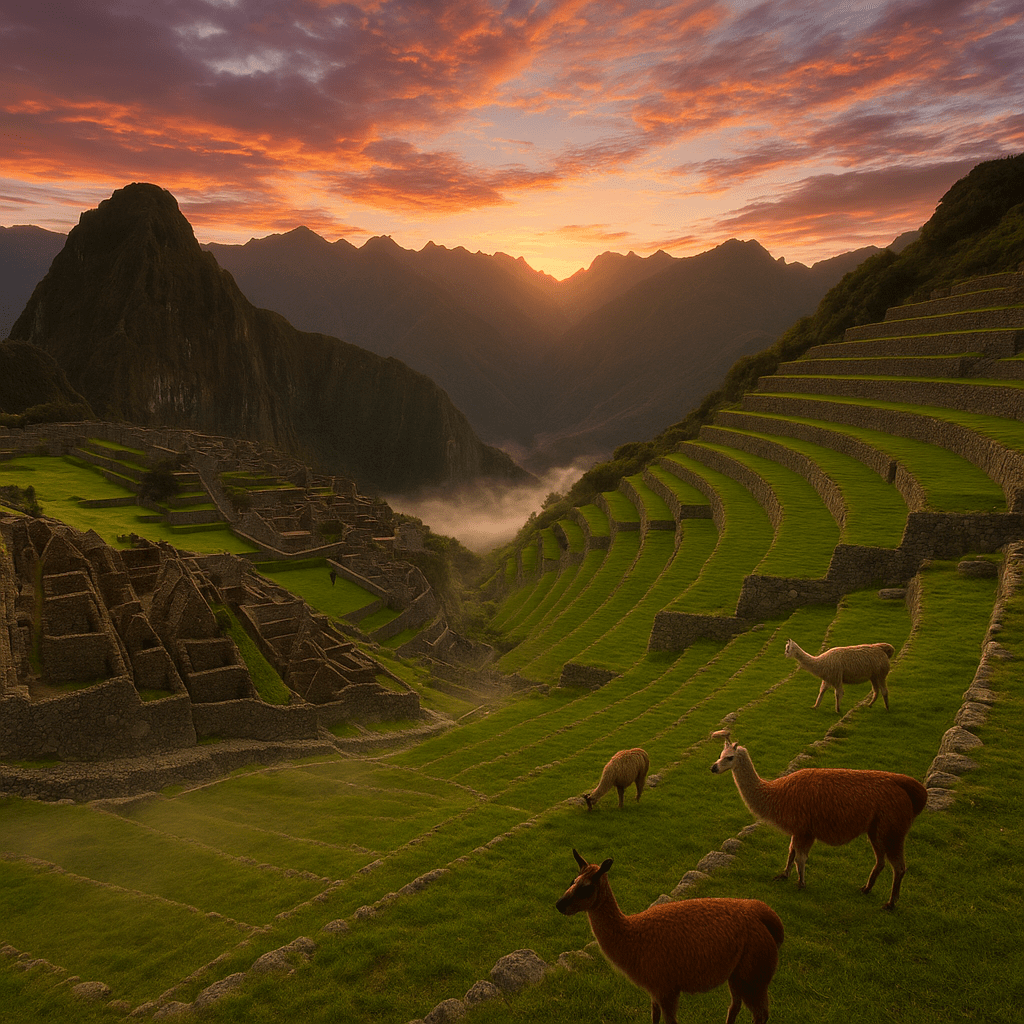Centuries before climate change became a global concern, the Inca built one of the most sophisticated agricultural systems in human history. Their high-altitude landscapes, carved with terraces, dotted with trees, and grazed by llamas, formed an ecological masterpiece that fed millions without exhausting the land.
Now, as climate instability threatens global food security, scientists argue that rediscovering these ancient methods could inspire a second agricultural revolution. A new study from the University of Sussex, published in Ambio, revisits the Inca world to uncover lessons in resilience that modern agriculture can no longer afford to ignore. The article, titled Trees, terraces and llamas: Resilient watershed management and sustainable agriculture the Inca way, offers a rare environmental window into how ancient societies thrived under changing climates, and how their strategies might guide us again.
A natural laboratory in the Andes
The story begins at Laguna Marcacocha, a small wetland in the Patacancha Valley of the Peruvian Andes. At 3,355 metres above sea level, this modest site hides an extraordinary archive of history. Beneath its sediments lies a 4,200-year environmental record, an unbroken timeline of climate shifts, vegetation change, and human adaptation.

Figure 1: General view north-eastwards up the Patacancha Valley over the infilled Laguna Marcacocha. Notice the concentration of pasture adjacent to Marcacocha, the density of surrounding Inca and pre-Incan terraces across the landscape and the proximity of the Inca road, less than 50m to the east, which connects the selva with the sierra.
Dr Frogley and colleagues, including Alex Chepstow-Lusty (University of Sussex, UK), Graham Thiele (International Potato Center, Lima), and Constantino Aucca Chutas (ECOAN, Peru), extracted an 8.25-metre-long sediment core using a Livingstone corer, a cylindrical device designed to collect continuous layers of lakebed deposits. Each layer in the core acted as a biological time capsule, preserving microscopic traces of the Andean past.

Figure 2: Catkins and pollen from aliso (Alnus acuminata), an important tree in Inca agroforestry as it grows straight and relatively fast, while being nitrogen-fixing. Pollen of this species are dispersed in large quantities by the wind.
To interpret these traces, the researchers employed palaeoecological analysis, studying pollen, charcoal, algae, and other biological indicators known as proxies. They identified ten key proxies, ranging from Polylepis and Alnus pollen (which reflect forest cover) to detritus-eating oribatid mites (evidence of livestock presence and trade) and Pediastrum algae (an indicator of water quality). Through these variables, the team reconstructed millennia of ecological balance, agricultural innovation, and environmental decline.

Figure 3: Abundances of aquatic detritus-feeding oribatid mites (Hydrozetes sp.) in the lake sediments, which ate the broken down remains of large herbivore dung, were used to estimate livestock on the landscape.
This method, known as multi-proxy palaeoenvironmental reconstruction, allowed the scientists to connect ecological changes with cultural transformations. It provided one of the most detailed records ever assembled of how humans managed a fragile highland ecosystem.
Life before the empire
Long before the Inca Empire rose to prominence, early Andean farmers were already experimenting with climate-smart agriculture. Around 2200 BCE, Marcacocha’s sediments showed signs of small-scale cultivation, with pollen from Amaranthaceae, a group that includes quinoa and related grains. Evidence of livestock dung and frequent burning suggests that early agriculturalists managed their land actively, possibly using fire to clear forests and fields and rejuvenate soils.

Figure 4: View looking northwards upstream over the Patacancha Valley, with the small infilled lake of Marcacocha (defined by the dark circle of sedge vegetation) set within a landscape of terraces, under-utilised fields and archaeological remains. Photograph taken August 1996 with Marcacocha partly in shadow before 8.30 a.m.
As climate conditions improved around 700 BCE, maize pollen appeared for the first time. This marked a transition from itinerant to structured farming systems. Fields were maintained through controlled burning and probably rudimentary irrigation, while native forests such as Polylepis woodlands began to recede due to overuse, as well as not being adapted to burning.
By the early first millennium CE, the Andes saw alternating periods of aridity and rainfall, each demanding different strategies. When the climate turned cooler and drier around 200 CE, agriculture retreated. Yet even these early communities demonstrated a capacity for adaptation, balancing livestock, crops, and water in a demanding environment. Their methods prefigured what scientists now call resilient watershed management.
Terraces that tamed mountains
A major climatic shift around 1100 CE, known as the Medieval Climate Anomaly, brought warmer conditions across the Andes. Populations moved upward into higher valleys, including Marcacocha, and began transforming steep slopes into terraced farmland.
These terraces, built with stone retaining walls, were engineering marvels. They prevented soil erosion, conserved water, and allowed crops to flourish on otherwise unstable ground. The study found a layer of compact, shale-like sediment dating to this period, i.e. direct geological evidence of widespread terrace construction and landscape stabilisation.
At the same time, Alder trees (Alnus acuminata) expanded across the slopes. These fast-growing, nitrogen-fixing trees enriched the soil while complementing terraces and irrigation channels. Their pollen reached peak abundance in the Inca period, a sign that agroforestry had become an integral part of the highland ecosystem.
The combination of terracing, tree planting, and sustainable herding transformed the Andes into one of the world’s most resilient agricultural regions. The scientists describe this as an early form of climate-smart agriculture, centuries before the term was coined by the UN Food and Agriculture Organization (FAO).
The Inca innovation system
By the fourteenth century, the Inca had perfected this relationship between people and landscape. From their capital in Cusco, they managed an empire stretching from what is today modern Colombia to Chile. At its height, it may have supported up to 14 million people.
In the Cusco heartland, including Marcacocha and nearby Ollantaytambo, the Inca established a dual agricultural economy. State fields grew staple crops such as maize for imperial tribute, while smallholders cultivated diverse local plots, including potatoes, for community use. The integration of forestry, terracing, and irrigation created a self-regulating system that maintained soil fertility and food security without chemical inputs or large-scale deforestation.
Llamas and alpacas played a critical ecological role. Their dung provided organic fertiliser and fuel, and their grazing helped manage vegetation without compacting fragile soils. Records from the study indicate sustained oribatid mites in this period, biological fingerprints of thriving camelid herds.
Trade routes crisscrossed the Andes, with caravans of up to a thousand llamas transporting goods between highlands and rainforest valleys. This dynamic exchange linked ecological zones and reinforced the empire’s sustainability.
Much remains to be discovered from the sediment cores taken in the Cusco area, often now from wetland places which no longer exist due to climate change over the last twenty-five years. This information can support the existing traditional knowledge of the communities living at high altitudes, faced with melting glaciers and water insecurity, in their efforts to mitigate the extreme impacts of climate change.
– Alex Chepstow-Lusty
When conquest disrupted balance
The arrival of the Spanish in the sixteenth century marked a rupture in this delicate equilibrium. Conquistadors introduced Old World livestock such as cattle, sheep, and goats, whose heavier hooves and grazing habits degraded the terraces and stripped the soils. Diseases like llama mange decimated native herds, while epidemics such as smallpox and influenza reduced the human population by over 90 per cent within a century.

Figure 5: Cattle browsing and preventing regeneration in Polylepis fragment at c. 4000 m above the community of Huilloc.
The researchers found direct sedimentary evidence of this ecological collapse. Algae concentrations spiked, reflecting nutrient runoff from livestock waste. Pollen from native trees like Alnus plummeted, showing rapid deforestation. The once-stable terraces eroded, and by 1800 CE, the former lake at Marcacocha had become a sedge-dominated wetland, no longer able to archive its environmental story.
This post-conquest degradation illustrates how imported land-use models disregarded centuries of local adaptation. Colonial hacienda systems prioritised monocultures like maize and wheat for export, replacing communal stewardship with extractive production. The long-term result was a fractured watershed and vulnerable highland ecosystems that still struggle with erosion and water scarcity today.
Climate change and the Andean legacy
Modern Peru now faces many of the same challenges the Inca once managed so effectively. The World Bank lists it among the most climate-vulnerable countries in Latin America, with rapid glacier loss, erratic rainfall, and rising temperatures threatening both rural livelihoods and urban water supplies.
The research team highlights the Cordillera Vilcanota, where glaciers have shrunk by nearly 30 per cent since 1985. This ice melt once ensured a steady release of water throughout the year, but now extreme rainfall alternates with prolonged drought. In 2010, torrential rains destroyed crops, homes, and infrastructure across Cusco, displacing 25,000 people and causing over $200 million in losses.
The authors argue that this vulnerability is not just environmental but historical, i.e. the cumulative effect of abandoning the Inca model of watershed resilience. Restoring elements of that model, they suggest, could strengthen highland communities in a warming world.
Towards a second Andean revolution
The authors call for what they describe as a “second climate-smart agricultural revolution”. The first, they argue, was led by the Inca themselves, who combined technology, ecology, and social organisation to adapt to climatic variability.
A modern equivalent would mean emphasizing the importance of native crops such as quinoa, potatoes and other high-altitude tubers, whose genetic diversity allows them to withstand heat and drought. It would also involve reviving camelid husbandry, since llamas and alpacas cause far less soil compaction than imported livestock. Expanding agroforestry with native trees like Polylepis, Alnus and Escallonia could reduce erosion and retain water in degraded slopes.
Learning from failure and renewal
Not all attempts to revive Inca methods have succeeded. In the 1990s, international organisations funded the restoration of the Pumamarca canal system near Marcacocha, employing local residents to rebuild terraces and irrigation channels. Despite initial enthusiasm, the project was soon abandoned, as maintenance demands exceeded local capacity.
This, the authors suggest, reflects a broader issue in development work: insufficient engagement with the social capital of Andean communities. Sustainable change cannot be imposed externally. It must align with local knowledge, values, and market realities.

Figure 6: Reforestation with Polylepis seedlings by the community of Huilloc, upstream from Marcacocha in the Patacancha Valley. Currently, 680 hectares have been reforested since 2000. Photograph: ECOAN
In contrast, the success of Asociación Ecosistemas Andinos (ECOAN) and its regional initiative Acción Andina shows what is possible when collaboration is genuine. Founded by co-author Constantino Aucca Chutas, Acción Andina has planted more than three million native trees across the Peruvian Andes, including 1.6 million in the Cusco region. In the Patacancha Valley alone, the community of Huilloc has reforested 680 hectares with Polylepis (queuña), reviving an ecosystem that captures mist, conserves water, and shelters endemic species.
Science beneath the soil
At the heart of the study lies a remarkable scientific technique: reading the language of sediments. The 8.25-metre core from Marcacocha, spanning four millennia, records every shift in temperature, vegetation, and human influence as distinct microscopic layers.
Each layer contains pollen from surrounding plants, charcoal from ancient fires, and aquatic oribatid mites that ate the broken down remains of animal dung. By dating the sediments using radiocarbon dating and 210Pb isotope chronology, the researchers built a precise timeline of ecological change.
They then correlated this data with archaeological and historical evidence, aligning sedimentary signals with cultural milestones such as the rise of the Wari civilisation, the expansion of Inca agriculture, and the Spanish conquest. This interdisciplinary synthesis makes Marcacocha one of the most detailed environmental archives of human–climate interaction in South America.
The team’s findings underscore the value of combining palaeoecology, archaeology, and anthropology to interpret how societies endure and adapt.

Figure 7: Local kids at the site of Marcacocha after it was cored in July 1993.
As the planet grapples with accelerating climate instability, the Inca legacy reminds us that sustainability is a collective choice rooted in shared responsibility. By combining ancient wisdom with contemporary science, humanity may rediscover how to live within its ecological means, just as the Inca did on the steep slopes of the Andes.
Reference
Frogley, M. R., Chepstow-Lusty, A., Thiele, G., & Aucca Chutas, C. (2025). Trees, terraces and llamas: Resilient watershed management and sustainable agriculture the Inca way. Ambio, 54, 793–807. https://doi.org/10.1007/s13280-024-02121-5







